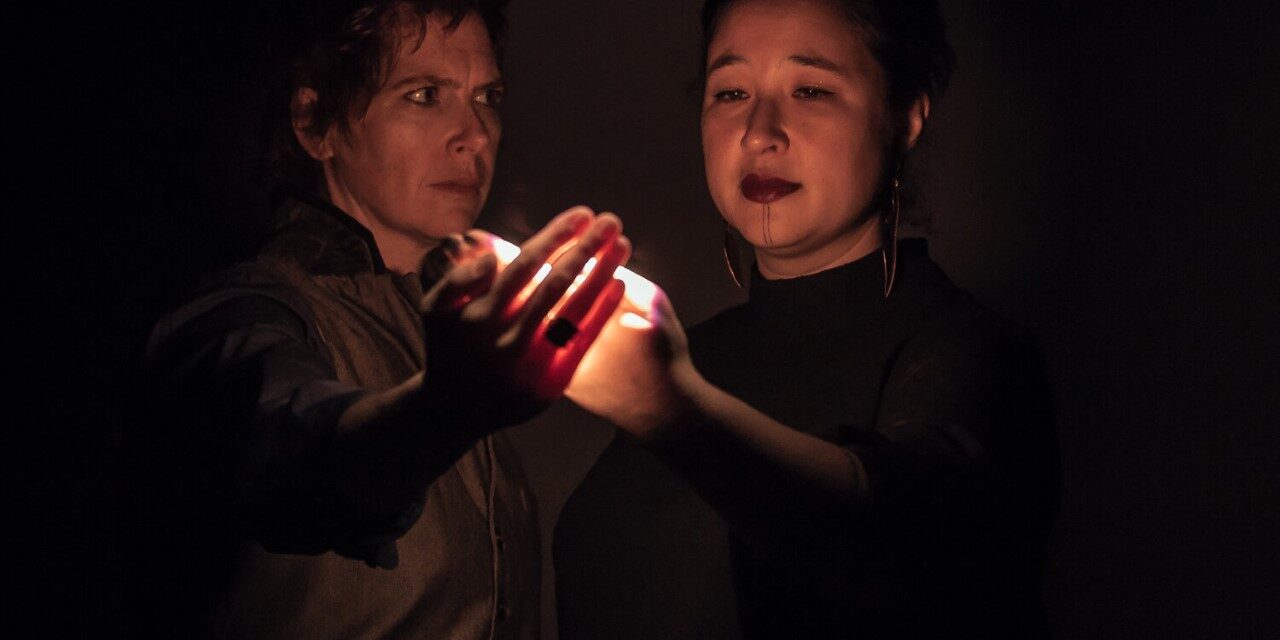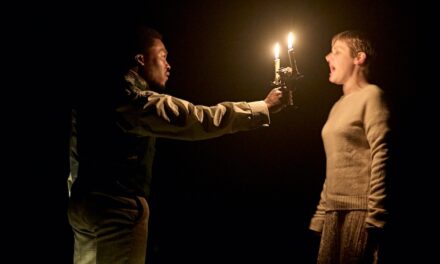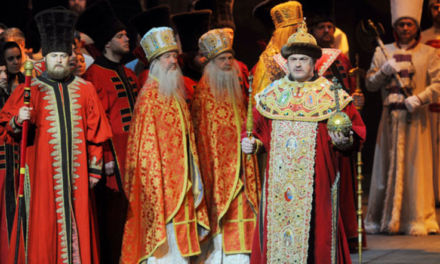There’s a danger to hasty reaction. To act on instinct is to perhaps ignore a bigger contextual picture; a gut-reaction, after all, is only as informed as its bearer. Sometimes that initial shock needs to be bottled – fermented within the larger scope of discourse, self-education, and reflection.
Such is the case with the GCTC’s Kiinalik: These Sharp Tools, a vibrant and unapologetic co-production with National Arts Centre Indigenous Theatre and Toronto’s Buddies in Bad Times Theatre. Kiinalik… is a difficult-to-encapsulate two hours of contemporary Canadian theatrical fare, punctuated by challenging moments of visceral, sexual celebration of Inuit culture and tradition.
It’s a piece that sticks with you in the time following its final vignette. It’s a love letter to an Arctic slowly melting into the Southern waters. It’s a concert. It’s a conversation. It’s a dance, a slide show, a mediation, a plea, a ritual, a history, a family. Kiinalik: These Sharp Tools is difficult to describe; in truth, it’s likely meant to be. How can we summarize true, ephemeral fear in a single tagline? What media-friendly language makes the atrocities of colonization easier to swallow? Performers Laakkuluk Williamson Bathory and Evalyn Parry urge their audience to lean into childlike reaction, making space for a communal theatre-making experience otherwise unfamiliar to the GCTC.
At times, Williamson Bathory’s and Parry’s embrace of the fleeting is astonishingly effective (without wandering into spoiler territory, opening night featured a full half-hour of unbroken attention on Laakkuluk Williamson Bathory’s venture into transgression). The piece’s pacing isn’t quite there yet; the disjointedness of its first ninety minutes is only somewhat resolved by its guns-blazing climax, and the post-mask dénouement feels somewhat redundant in light of the extent to which we as an audience have been implicated in storytelling. However, Kiinalik: These Sharp Tools is remarkable in its ability to find connections implicit between all people and draw those connections into something more tangible. Opening night saw a host of audience members whose lives had brought them Arctic travel and subsequent clarity; we bonded over these connections before being brought into collective wound and eventual healing.
There’s merit in evident onstage power; opening night witnessed several walk-outs, provoked by gory images and events otherwise unfamiliar to the Southern gaze. The in-your-face of this performance is, however, what makes it so vital; perhaps shock will pave the way for future, more measured performances on Inuit culture, when we as a city are ready to proactively engage with those whose history is melting at the hands of our own poor economic choices. Williamson Bathory and Parry warn us in the show’s first few minutes of its finale’s participatory nature, assuring us that we do not have to assist if we do not feel capable; in truth, I shied away, and gave in only under the seemingly-limitless glare of Williamson Bathory’s mask. Yes, this breaks a social contract, one we as a theatre-making city have signed under parameters of (necessary) trigger warnings; in the hours following this encounter, though, my initial outrage gave way to something easier to handle. I’d been afraid, I’d been pushed out of my comfort zone, and I’d learned how better to deal with my own fear (as Williamson Bathory later reveals is the point of this ritual when performing it for children).
Kiinalik: These Sharp Tools is a must-see; that GCTC has programmed this into its main season is a commendable display of guts and commitment to ground-breaking new work from around Canada. Kiinalik: These Sharp Tools will likely linger in Ottawa’s collective cultural memory for the conversations it has started on what our theatre has been in years past and what it can be moving forward; challenge is not necessarily a negative framework for performance, and can, as Kiinalik shows us, be cause for bonding and celebration.
Kiinalik: These Sharp Tools runs at GCTC until February 9, 2020. Tickets are available at www.gctc.ca
This article was originally posted in Capital Critics Circle on 28 January 2020 and has been reposted with permission. To read the original article, click here.
This post was written by the author in their personal capacity.The opinions expressed in this article are the author’s own and do not reflect the view of The Theatre Times, their staff or collaborators.
This post was written by Aisling Murphy.
The views expressed here belong to the author and do not necessarily reflect our views and opinions.


















